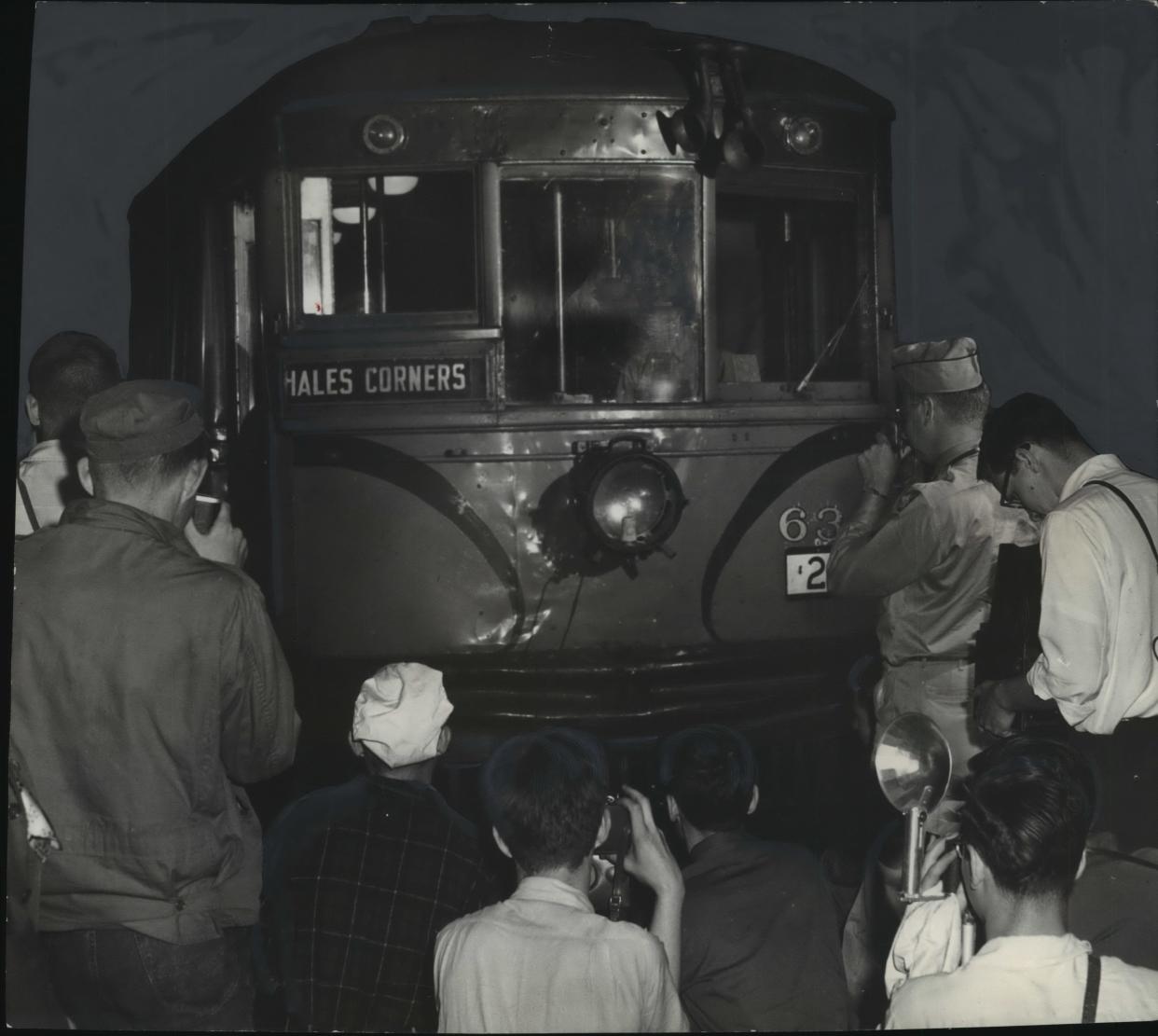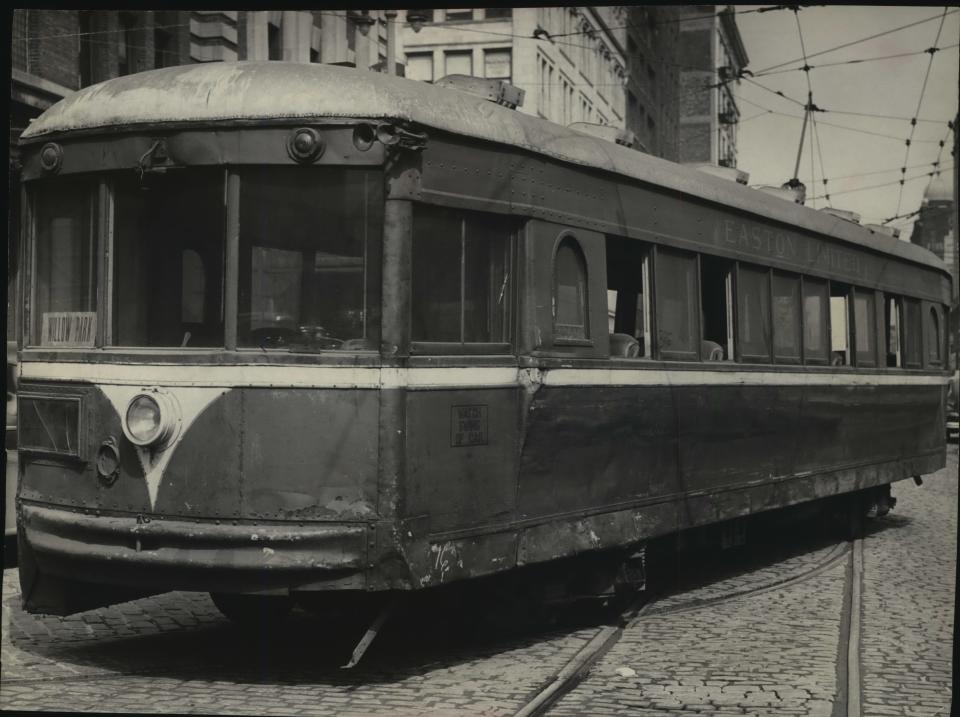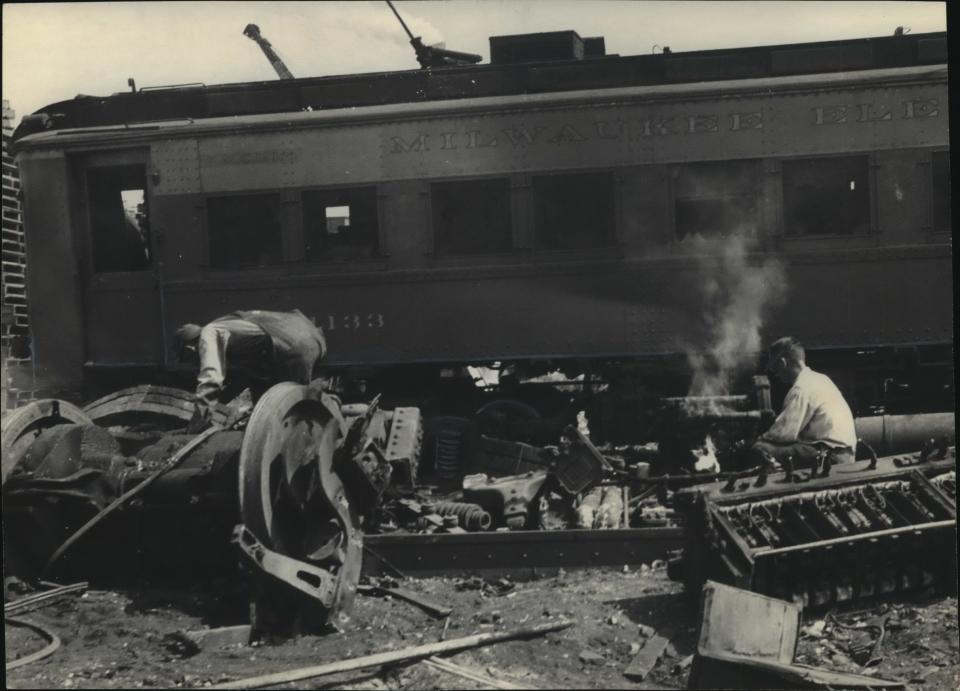A crash and the end of the line for Milwaukee's rapid transit system

"Is this the last one … ?" a passenger asked.
"This is it," replied Earl Schaefer, a crew member on the last run of Milwaukee's last electric rapid-transit train.
Milwaukee's interurban had been running from the heart of downtown to the suburbs and beyond for nearly half a century. This was its final run, on June 30, 1951, from Milwaukee to Waukesha and back.
Milwaukee Journal reporter Rod Van Every, who went along for the last ride, met another passenger, "an old customer, drunk and sad."
"This hurts me," the rider said.
The Milwaukee Electric Railway & Light Co. — the utility now known as We Energies — was incorporated in 1896. At its peak, the company had more than 200 miles of electric rapid-transit lines, along with its network of streetcars in Milwaukee.

In 1938, TMER&L split into two companies: Wisconsin Electric Power Co. and Milwaukee Electric Railway & Transport Co. Not long after, the utility began abandoning less profitable interurban lines; in 1946, it sold what was left to Kenosha Motor Coach Lines. A few months later, the interurban business was sold again, to Northland Greyhound.
By 1949, the Milwaukee rapid transit system was down to two interurban lines, running from the electric company's Public Service Building at 231 W. Michigan St. to Hales Corners and Waukesha. When word surfaced that Northland Greyhound was looking to shut them down, Jay E. Maeder, an industrial engineer from Cleveland, bought the lines and renamed the company Milwaukee Rapid Transit & Speedrail Co. — Speedrail for short.
But Speedrail struggled from the start. Faced with aging rolling stock and rail lines badly in need of repair, the company had a string of high-profile accidents. The worst of them spelled rapid transit's doom in Milwaukee.

On Sept. 2, 1950, two of Speedrail's trains collided on the Milwaukee-to-Hales Corners line. Both trains were carrying members of the National Model Railroad Association, which was having its convention at the Schroeder Hotel (now the Milwaukee Hilton City Center).
Eight people were reported dead at the scene. Two more people died from their injuries in the hospital. Forty-five people were injured.
Maeder himself was driving the train from Hales Corners. He told The Journal he was at the controls because he'd actually dreamed about just such a crash happening the night before.
"Because of this dream, I determined to be close to the operation of the chartered trains Saturday," he told The Journal in a front-page story published Sept. 3, 1950. "I went along on one of the trains and took control so that nothing would happen because of my dream, but my dream came true."
Less than three weeks later, a coroner's jury found Maeder guilty of gross negligence and recommended he be prosecuted. He was charged with fourth-degree manslaughter, but the charge was dismissed. Maeder resigned from the company.
But the crash left Speedrail on the ropes. Its insurance company, saying premiums were overdue, tried to cancel its coverage after the fatal crash, but state regulators and city officials convinced the insurer to change its mind to prevent the rapid transit system from shutting down altogether.
Riders weren't convinced. At the time of the crash, Speedrail's daily ridership was 5,000 to 9,000 people; about six months later, according to Journal and Milwaukee Sentinel reports, it was down to 3,500 to 5,000.
After the company failed to get financial support from the city of Milwaukee, it managed to find a buyer to take it over, but it was not enough. On June 18, 1951, a federal judge ordered that both rapid transit lines discontinue service as of June 30.
On the interurban's final run to Waukesha on June 30, Schaefer, the crew member, talked with riders on the way to Waukesha, but The Journal's Van Every reported he was quiet on the way back downtown.
"All out — end of the line," Schaefer called after the train pulled into the terminal.
Before the end of the decade, streetcar service in the city would be over, too — until The Hop began service in 2018.
RELATED: When Milwaukee had electric streetcars, then and now
This article originally appeared on Milwaukee Journal Sentinel: The end of the line for Milwaukee's rapid transit system

